A post from the present: winter is here and so far, southwest WA has had a small but significant amount of rainfall. That means fungi! Now that the season has started, I’ll be posting photos of my mushroom finds throughout the winter. Today’s post is images from the area of Nannup, where I stayed with some friends and took some time to explore.
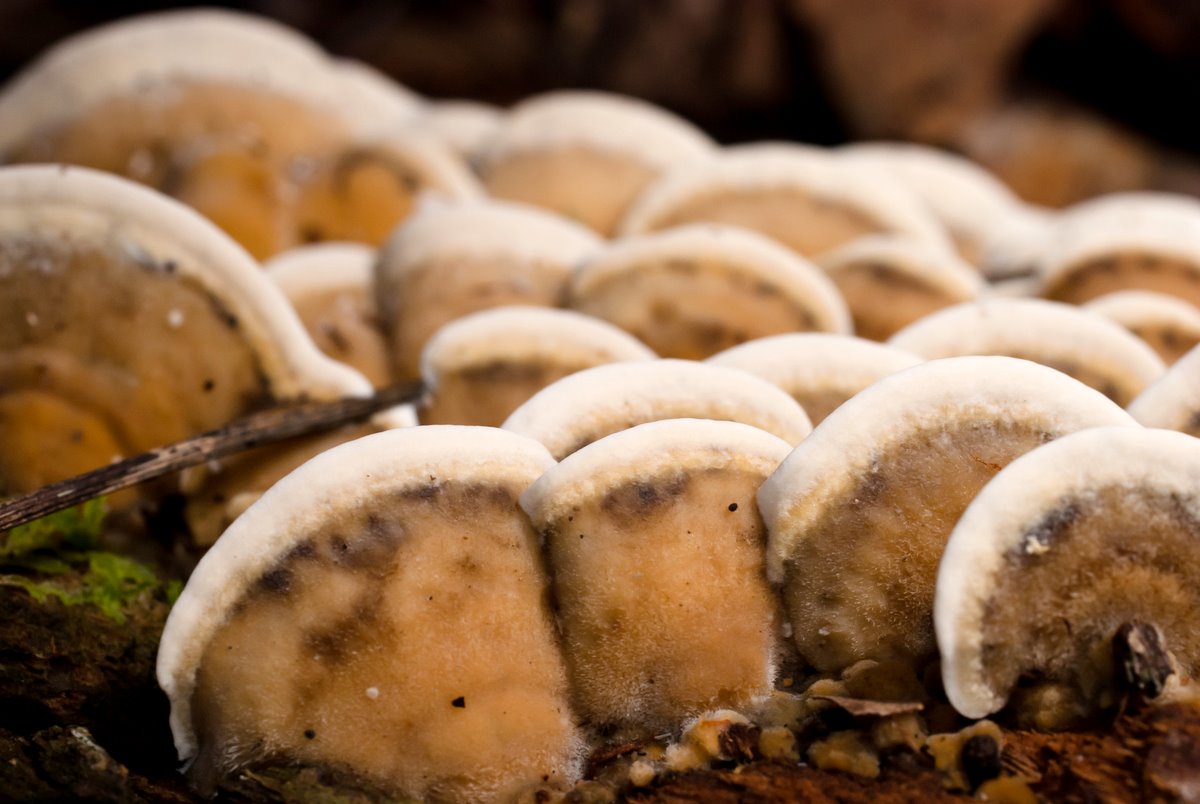
One of my current main interests is the medicinal mushrooms of the polyporaceae, including Trametes versicolor and Ganoderma species. There is significant evidence that these mushrooms can be used to treat some types of cancer, some viruses, and a range of physiological diseases. Trametes, called the Turkey Tail mushroom because of it’s concentric rings of colour, is also interesting biologically and ecologically. It occurs in many countries around the world and grows on many different types of wood, and has even been found to be able to decompose trinitrotoluene (TNT), the explosive in dynamite. It is highly variable in colour, as you can see by the following photo, which shows much paler specimens. Other mushrooms of this species that I have seen have quite striking concentric rings of brown, grey, and white, which accounts for its common name.
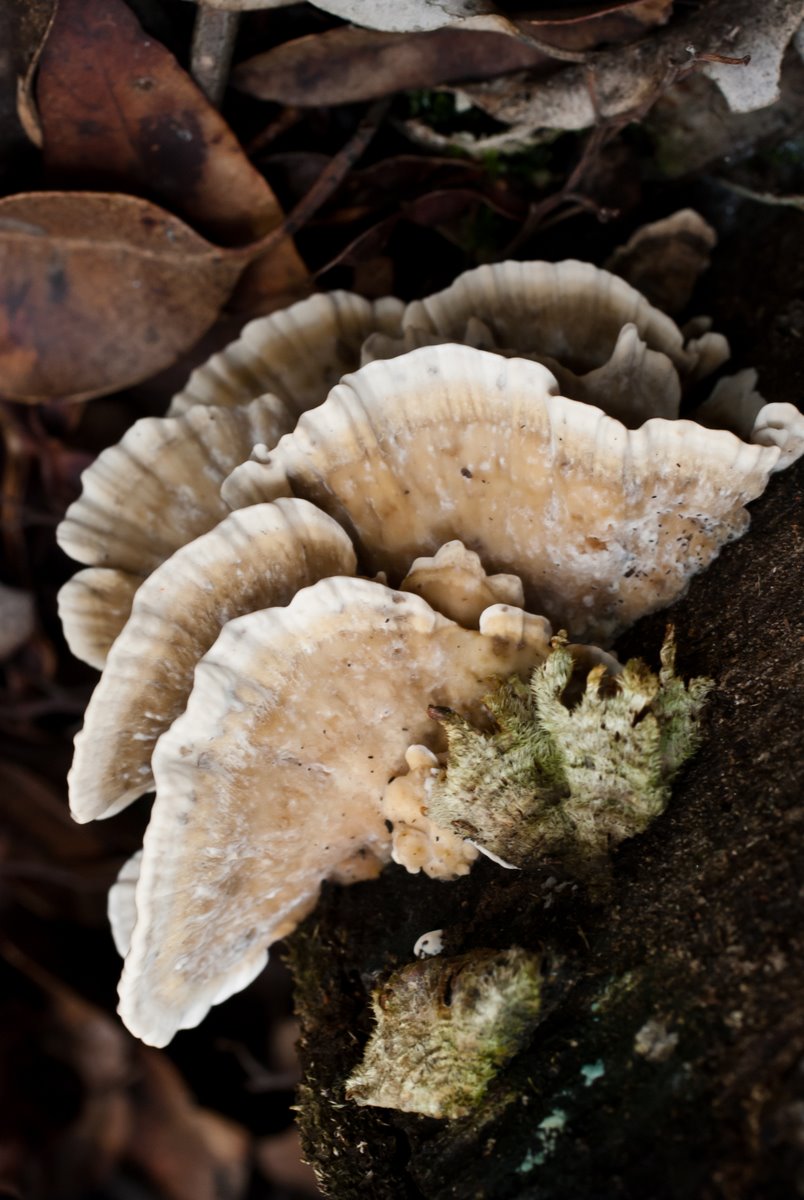
Another fungus that I saw the jarrah forest was this Gymnopilus species. I suspect this one is G. pupuratus, also known as Laughing Gym, a species that is also reputed to have ethnopharmacological potential as an hallucinogen. It does not appear to have entered the Western Australian psychoactive mushroom seekers’ culture to the extent that a certain other taxon has, probably due to the fact that it is from a taxonomic group that is not well-known globally for its psychoactivity. It may also be weaker or more variable in potency, and hence less reliable as a drug, but the common name speaks volumes. There are very few internet reports of its use. I admired its perfect form and fleshy orange skin without the temptation to perform any pharmacological analysis using my own neurology. I have found them growing in damp areas on Banksia and Melaleuca logs many times before. This one was growing from an old jarrah log.
EDIT: I have since brushed up on my Gymnopilus identification skills, and I do not believe this one to be G. purpuratus – however I don’t know what it is! Any suggestions welcome. I am still learning about these fungi.
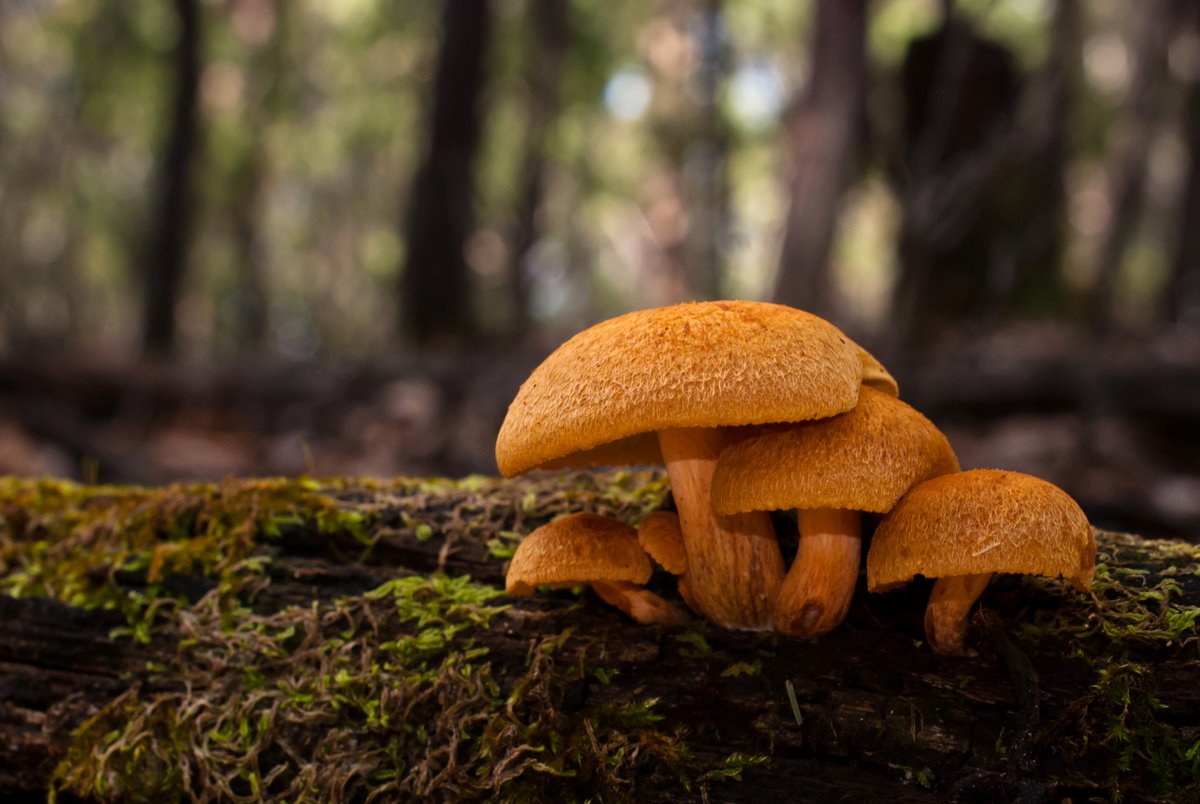
There are several large areas of pine plantation near Nannup, and I went for a wander to see what I could find amongst the leaf litter. The most common were Slippery Jacks, Suillus luteus, a large mycorrhizal mushroom in the bolete family. These are reputedly edible, and I have eaten them; but I will continue to refer to them as ‘reputedly edible’. To make them palatable, you are advised to remove the tough skin from the cap, and also the pores underneath the cap, leaving only a small wad of mushroom flesh. This may then cause mild to severe gastrointestinal upset, although some people continue to claim they eat them without a problem. I ate them in Ecuador, picked from a pine forest near Vilcabamba. I found the taste acceptable, however the sliminess was a bit much for me, and the meal left me with a vague nausea. I won’t eat them again unless I have to.
Also amongst the pines in Nannup I found these tiny mushrooms which are probably in the genus Mycena. Due to a few dry days, the caps had started to shrivel, but they were still pretty cute.
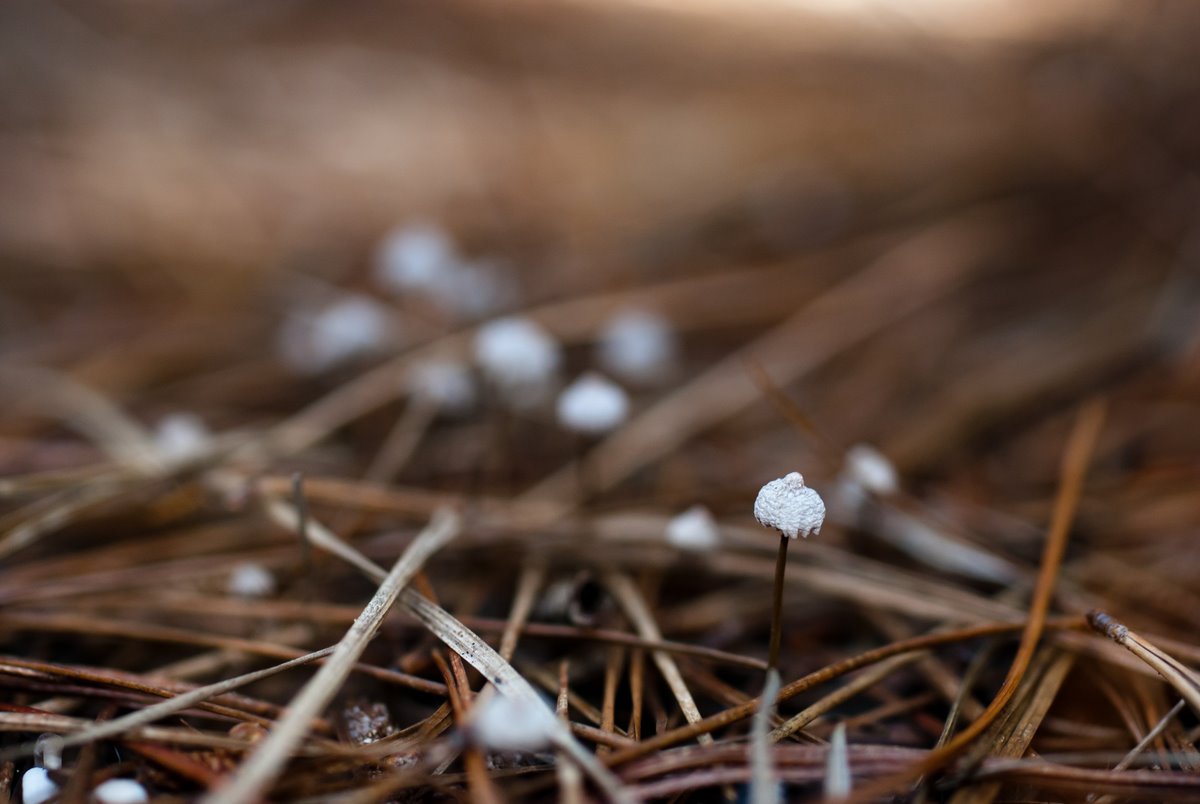
After a day of fungal foraging, I was rewarded by this spectacular sunset through the trees. The light was like honey, trickling through the smoke from a fire on a neighbouring property.
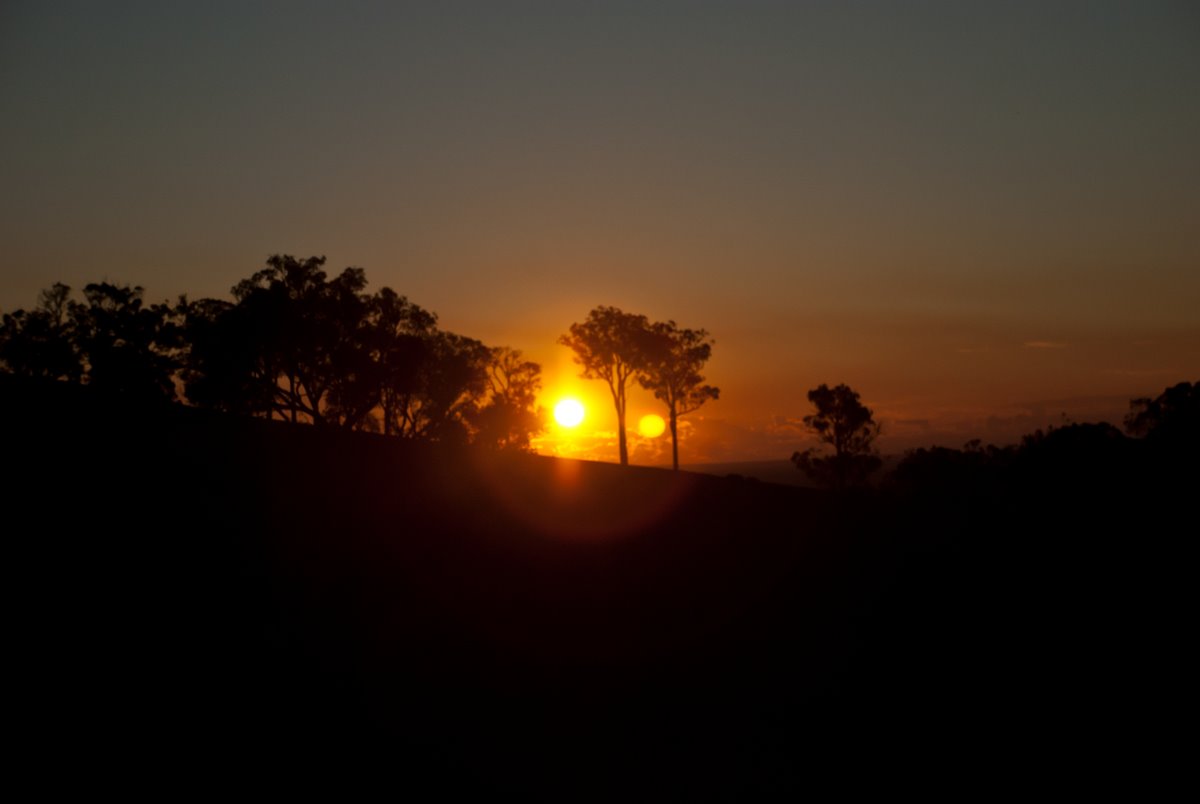
I’ll be adding further posts over the next month or two with my winter adventures. Enjoy.
Hi, I think your photos are beautiful, but what I really would like to ask you is if you know of any areas around the serpentine area where you can collect wild edible mushrooms. We’re new here and used to collect wild mushrooms all the time in Victoria and can’t find anyone with the same interest and who therefore knows areas that are good. We have looked and walked and searched but didn’t find anything. We love cooking with wild mushrooms especially the boletus family. They are brown and sticky on top and yellow and spongy on the bottom…YUM. Thank you.
Hi Amber,
Thanks for your comment. It is definitely easier to find edible mushrooms in Victoria than it is in WA. The brown and yellow Boletes are probably Suillius luteus (Slippery Jack) which you should be able to find here, particularly in pine plantations. Other than that, Agaricus species can sometimes be found (although be careful on the ID) and Coprinus species can be found growing on lawns or off straw bales. Good luck.
It’s also worth noting that so far the season has been pretty dry. Hopefully the recent rains will continue, but generally in WA the fungus season doesn’t really start until late May – June.
I also had a hunt around the serpentine area today around the pine plantations and found nothing! I am from SA where there are pine mushrooms and slippery jacks abound! Any luck since Amber?
Hi guys, there’s definitely slippery jacks and another littler boletus strain in the pine plantations around Margaret River. The last few weeks there has been consistent flushes, also there’s a lot of sorrel, chickweed and oxalis to be had. Happy hunting!
Thanks for the tips Hannah 🙂
Hi Hannah I’m a keen photographer and would love to get into shooting these amazing little species I’m heading south to Margery river this weekend and would love to get an idea on food places to shoot would you be kind enough to point me in the right direction?? Snappermilesimaging@gmail.com
Hi i am interested in finding or learning which mushrooms beside field or horse mushrooms are edible in the Margaret river region. I have recently been told that there is a mushroom fungus that grows in the pepe tree agonis flexuosa it is white with an oyster mushroom ( Pleurotus )like appearance and have been told they are edible. And that nearly all mushrooms that grow on living trees are edible. thanks
Hi Kashmir, it sounds like the Pleurotus-like mushroom growing on peppermint (Agonis) trees is probably Omphalotus nidiformis, the ghost fungus. This is a bioluminescent mushroom (it glows in the dark) and is totally awesome for that reason, but is not edible. Apparently it causes stomach upset when eaten. Not highly toxic though. I would ignore the advice re: mushrooms that grow on living trees – firstly because most mushrooms that grow on living trees are very hard, woody things that aren’t really edible, secondly because I don’t think it’s true.
Hello there,
I was wondering if you wouldn’t mind me using some of your photos for my conservation project? I will give full credit to you. I am studying Conservation Wildlife Biology at Murdoch and I am doing some research on Larger Fungi of WA’s South West.
Thank you
Hello i have found a different type of boletus family Mushroom in hardwood undergrowth I have no idea what it is its smaller than slippery Jack and white sponge and yellow creamy colored top I’m uncertain if it is a porchini or not I have kept some specimens drying but would like to know a contact where I can get them tested and possibly if it’s a new species I would like to name them also I have found some weird looking cup mushrooms growing in my moral spot which I would like to find out some information about light brown cup mushrooms in the south west region thankyou rob
Hi Rob,
I’ve found local Facebook groups very useful for plant and fungi ID. You might find a group in your area for people with interest and expertise to help where you can post photos.